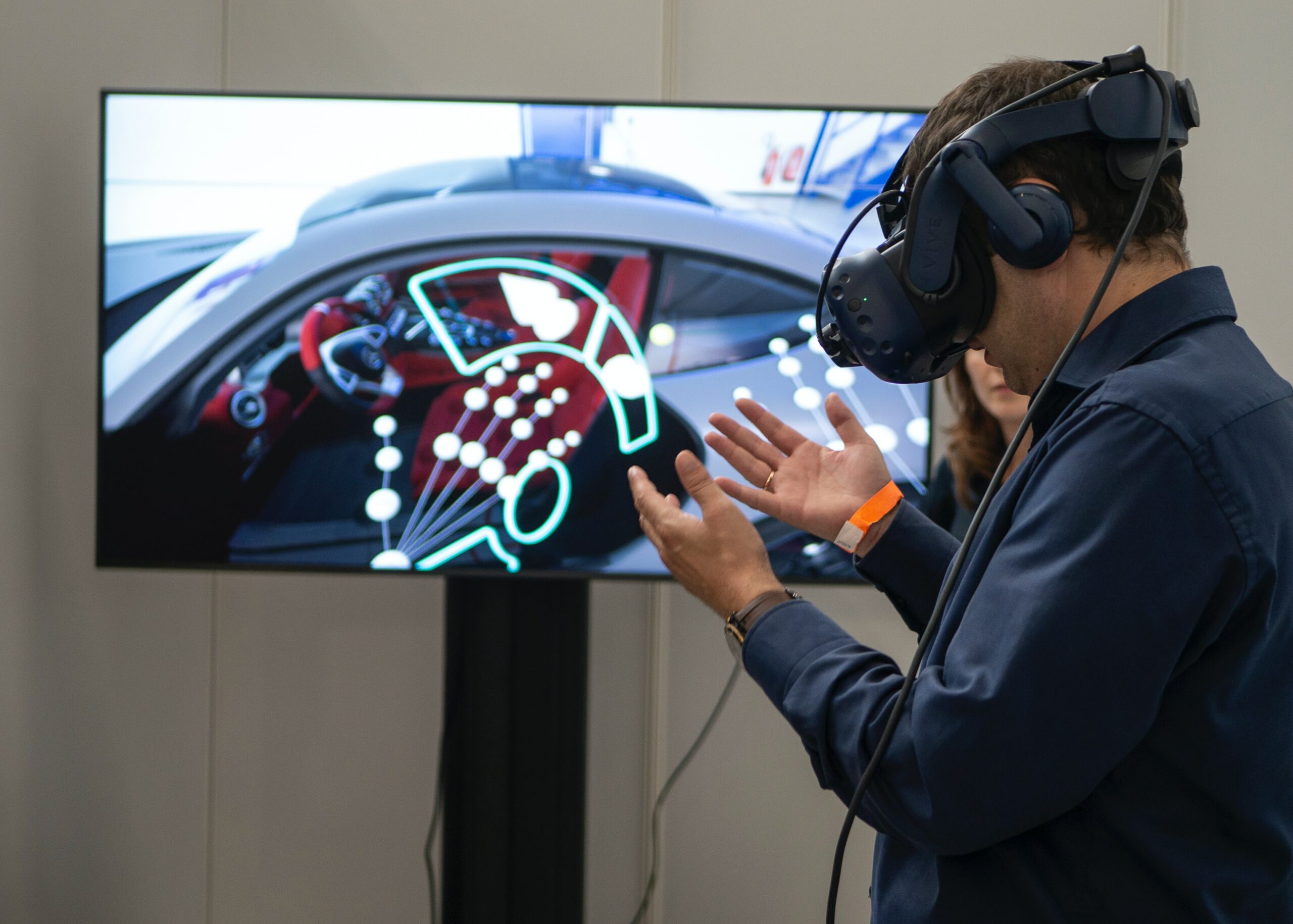How AR is Changing the Maintenance and Repair Business
By prioritizing innovation that constantly employs procedures, the fourth industrial revolution has enabled organizations to achieve effective performance and precision. To keep on par with the competition, businesses must produce the highest quality product possible, with minimal downtime.
Fortunately, since the introduction of AR (Augmented Reality), enterprises have been able to rapidly optimize the maintenance process. Without sending specialists to the field, AR delivers the maintenance process to the appropriate customer at the right time with the latest technology.
AR in maintenance allows technicians to access unsafe areas remotely, improves efficiency and accuracy in diagnostics and repairs, and capitalize on predictive technologies through AI.
In this article, we will talk about how using augmented reality for maintenance and repair is drastically changing businesses.
Augmented Reality and Maintenance and Repair
Maintenance and repair are two of the most important aspects of the engineering sector, both of which are necessary for any industry’s growth and smooth operations. As AR integrates with the maintenance and repair sector of industry, manufacturing firms and other organizations are all undergoing rapid transformation.
The global AR market for repair, maintenance, and overhauling was worth $403.3 million in 2018 and is predicted to reach $3,319.0 million by 2024, increasing at a CAGR of 42.1 percent between 2018 and 2024.
Here are five benefits for businesses that use augmented reality to get the most out of their maintenance and repair procedures.
1. Enabling access in remote or inaccessible areas
Heavy industries that employ large energy plants, industrial plants, and large-scale manufacturing units are frequently built-in remote and isolated areas. This is because they cannot be installed in urban areas.
Whenever a breakdown happens in such circumstances, it is extremely difficult for skilled experts to reach the service area on time. Furthermore, gathering and storing large quantities of maintenance information in the form of guides in such areas is inconvenient.
As an example, nuclear power plants aren’t easy to navigate. Moreover, certain areas have high radiation, which shouldn’t be accessed without appropriate safety equipment.
In such cases, augmented reality can provide workers with intuitive navigation to target locations. It can also reveal the dispersion of radiation and problematic spots, such as an exposed rotating motor where clothing may become entangled and become life-threatening.
AR allows companies to take the issue to the field personnel by allowing them to virtually access the machine with the touch of a button. It also allows on-site service professionals to tap into the expertise of people who aren’t physically available.
It breaks down geographical and linguistic barriers and allows machines to be repaired in the shortest period feasible.
2. AR Maximizes Efficiency and Accuracy
So your firm has already incorporated maintenance and repair services as a process handled by your technicians? Not an issue.
AR remote assistance software can be adapted and modified to operate for maintenance services in any situation.
In fact, as per a study by Boeing, AR decreases production time by up to 25% in assembling wiring harnesses. Additional studies on firms like GE Healthcare, showcase that AR helps overall productivity by 32%.
Utilizing AR remote-help software, professionals will be able to view diagnostic or maintenance information. They can also quickly obtain related diagrams or instructions, allowing them to compare the genuine equipment with the 3D representations.
AR also allows personnel to execute their responsibilities in a step-by-step manner, using the information that is available to them at all times. This allows them to do duties accurately without missing any steps, as well as discover and report any difficulties quickly.
3. Knowledge transfer optimization and specialist technical help
Knowledge is power, and the experience that senior technicians can impart is tremendously useful. Senior service and maintenance professionals frequently retire before a suitable replacement is discovered.
Due to the knowledge transfer gap, teaching the younger service technician without the able guidance and input of the elders becomes painfully tough. AR can be utilized to create a type of virtual storehouse that can be accessed and used to teach new employees.
Additionally, technicians may lack sufficient competence in the case of unexpected situations that do not occur regularly. AR comes in handy in these situations because it can be utilized to record the troubleshooting process by helping the technician fix problems as they arise, as well as help with quick recall or call back.
4. Faster Diagnostics
In today’s manufacturing, daily activities include assembling thousands of microscopic bits in a precise sequence. Unlike traditional maintenance, which requires the technician to individually inspect each machine component, AR eliminates this requirement.
When a repair person comes on-site, augmented reality can be used to help identify what has to be replaced and how it should be done with more accuracy.
5. Predictive maintenance and repair are becoming more essential.
Preventing problems from occurring is the greatest way to ensure optimal planning and upkeep. Predictive maintenance is essential for keeping machinery in good working order and preventing unexpected failures.
Honeywell, a multinational conglomerate firm, uses TechSight, an augmented reality solution, to cut maintenance time and operational downtime. It connects remote tech assistance with on-site personnel by using smart glasses and real-time video conferencing.
This not only cuts repair time but also numerous associated expenditures, such as travel to bring remote tech support on-site.
AR and IoT work together to remind specialists to inspect the machinery for any faults at regular intervals. Downtime is greatly reduced as a result of this.
Possibly assume the maintenance is scheduled weeks or months ahead of time and be able to manage your production calendar accordingly. AR makes it possible to do all of this.
Industries using AR for Maintenance and Repair
AR case studies in maintenance and repair revealed that AR solutions are critical for increasing efficacy and lowering mistake rates. Let’s take a glance at some of the sectors that are benefiting from AR in the maintenance and repair space.
1. Automotive
When it comes to the Automotive industry, augmented reality helps in practically all procedures like designing, maintenance, repair, production, and training. Designers and auto mechanics can use spatial AR technology to match numerous alternatives to actual vehicle models.
Through their AR glasses, technicians can obtain paperwork and guidance without being distracted while working on a car. Warehouse staff can become faster and more productive by using AR-guided part locating.
AR can also assist with car maintenance. Instead of conducting time-consuming physical investigations, technical personnel may employ AR devices to swiftly detect equipment and machinery that need repair by simply inspecting their records and background.
As an example, Volkswagen’s MARTA ( Mobile Augmented Reality Technical Assistance) app depicts physical and digital parts in 3-dimensional relation to one another, making it easier to analyze and repair the vehicle.
2. Aviation
The use of augmented reality in maintenance and repairing in the aviation sector can provide incredible safety benefits. Commercial plane technicians can use augmented reality to evaluate and maintain their airplanes.
With a set of technologies such as 3D scanners, detectors, and others, the technology provides real-time details. The maintenance of the airplane can become tremendously effective with such a thorough inspection, bringing safety to the business.
When combined with 3D scanning, AR technology delivers a clear representation of the aircraft, allowing engineers to immediately discover dents, scratches, and other problems. The Air Forces have already been using this technology for quick diagnosis. Today, the commercial aviation industry is also waking up to its significance.
Airbus is utilizing virtual reality technology with its RHEA kit, which includes a virtual reality headset, touchpads, and thermal imaging cameras that enable technicians to check and repair airplanes in a highly interactive environment.
3. Healthcare
The healthcare business is being reinvented by AR, thanks to the growing use of linked devices combined with computer vision and artificial intelligence (AI). Cellphones and head-mounted displays are enabling novel interactions between the real world and virtual objects in healthcare, transforming the way services are given and improving overall patient care quality.
Hospital equipment that isn’t working properly can be catastrophic. By layering instructions on portable or head-mounted display systems, AR can aid field engineers in troubleshooting. This technology can also be used to help with device calibration and maintenance checks.
4. Manufacturing
Manufacturing Industries are adopting new ways to improve efficiency and cost. Introducing AR adaptive methods in maintenance and repair is one such right method. The application of AR in manufacturing industries can be in equipment maintenance and repair.
With augmented reality, manufacturing industries may have their product recreated as 3D representations. Learners can then engage with this 3-d equipment by changing their size, rotating them, and inspecting their interior structure.
Experts can digitally connect with equipment from afar to obtain real-time education using wearable AR systems like RealWear and Hololens 2.
5. Oil and Gas
AR can assist in improving employee safety and effectiveness in the oil & gas companies by giving visual elements and indicators, process phases, and repair and maintenance guidance.
Gesture-control armbands, for example, can start a video chat involving an on-site employee and a distant specialist, who can view what the person sees, guide them through a series of tasks, as well as provide highlighted instructions on the laborer’s augmented screen.
The employee can record a digital logbook or ‘checklist’ of completed tasks by nodding or tilting the head, and enter additional footnotes by voice as the restoration is being conducted. On a global scale, best practices are stored, maintained, and accepted.
Conclusion
AR is a popular ‘tool’ for maximizing the value and efficiency of machines. Getting the correct expertise, timely inputs, and the best service is extremely beneficial to organizations that use machinery that requires periodic inspection and service.
Investing in AR technology, whether you’re a small or medium firm or a large corporation, can ensure smooth maintenance and repair operations and help you spend less time dealing with production outages and slowdowns.


